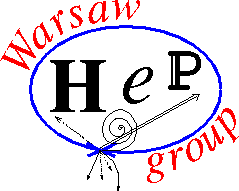SEMINARIUM FIZYKI WIELKICH ENERGII
Dnia 25 kwietnia (piątek) o godzinie 11:30, w sali B2.38 odbędzie się seminarium, na którym zostanie wygłoszony referat pt.:
„Vector Boson Fusion at the Muon Collider: electroweak factorisation and PDFs”
Referuje: Krzysztof Mękała (University of Warsaw/DESY)
As the European Strategy for Particle Physics undergoes its latest update, the scientific community is shaping the direction of the field for the decades to come. Central to this process is the decision on CERN’s next major collider initiative. Among the proposed options is a high-energy muon collider, aiming to probe the TeV scale, which would significantly enhance our understanding of the Standard Model, with a particular focus on electroweak interactions at previously unexplored energies. A key area of interest lies in vector-boson fusion, which is expected to dominate the high-energy landscape of many fundamental processes.
In my talk, I will outline the primary physics objectives of the Muon Collider project, with an emphasis on the role of vector-boson fusion. I will introduce the concepts of the collinear approximation and electroweak factorisation, and discuss the motivation behind revisiting this framework in the context of a future collider facility. Finally, I will present the emerging idea of electroweak Parton Distribution Functions and review their relevance in this setting.
Serdecznie zapraszamy
dr hab. Katarzyna Grzelak
prof. dr hab. Aleksander Filip Żarnecki

